The RF power amplifier is an important part of the closest transmitting antenna and is widely used in various wireless transmitting devices. The main indicators of RF power amplifier are: linearity, efficiency, noise figure, etc. The most concerned about it is its linearity and efficiency. With the increase in the number of wireless users and the development of broadband communication services, the communication frequency band has become more and more crowded. In order to accommodate more communication channels in a limited spectrum range, a modulation technique with higher spectrum utilization rate is needed. However, due to the nonlinearity of the amplifier, the envelope fluctuation of the signal produces nonlinear distortion. This puts higher demands on the linearity of the RF power amplifier.
Traditional methods for improving the nonlinear distortion of RF power amplifiers are: feedforward, negative feedback, and predistortion. Feedforward linearization requires additional auxiliary power amplifiers and more complex control circuits and is bulky and expensive. The method of negative feedback technique reduces the gain of the amplifier and only allows the amplifier to operate stably in a narrow frequency band, which is only suitable for narrowband communication systems. Predistortion technology is one of the most commonly used linearization techniques.
The circuit is simple in implementation, stable in operation, low in cost, wide in working frequency bandwidth, easy to integrate, and high in DC power. This article will introduce a new predistorter design and use ADS2008U1 to simulate the circuit. The results show that this scheme can improve the nonlinear distortion of the power amplifier.
1 How does predistortion linearization work?Predistortion is to add a nonlinear circuit at the front end of the power amplifier to compensate for the nonlinear distortion of the power amplifier. The basic principle is shown in Figure 1. The predistorter is essentially a nonlinear generator that compensates for the nonlinearity of the RF power amplifier by controlling the nonlinear generator so that its output is identical in amplitude and opposite in phase to the nonlinearity of the RF amplifier, thereby improving the power amplifier. The linearity allows the amplifier to obtain a linearized output. According to the position of the predistorter, the predistortion technology can be divided into three types: RF predistortion, IF predistortion and baseband predistortion. This paper mainly discusses RF predistortion technology.
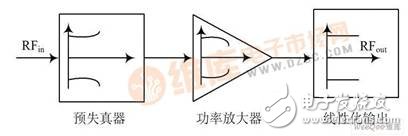
Figure 1 Predistortion schematic.
The block diagram of the traditional predistortion technique is shown in Figure 2.
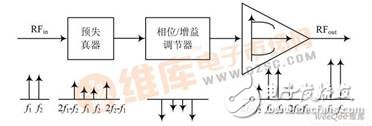
Figure 2 shows the traditional predistortion method.
Its shortcoming is that when the input signal enters the predistorter, there is not only a nonlinear distortion signal for compensating the nonlinear characteristics of the RF power amplifier at its output, but also a residual fundamental frequency component, according to the principle of predistortion technology. It can be seen that this part of the residual fundamental frequency signal is opposite to the phase of the fundamental frequency signal in the RF power amplifier. Therefore, while improving the nonlinear characteristics of the power amplifier, its output power is also weakened to some extent.
2 New predistorter designIn this paper, a co-parallel diode pair predistorter is used in the form of a bridge. The predistortion model is shown in Fig. 3.
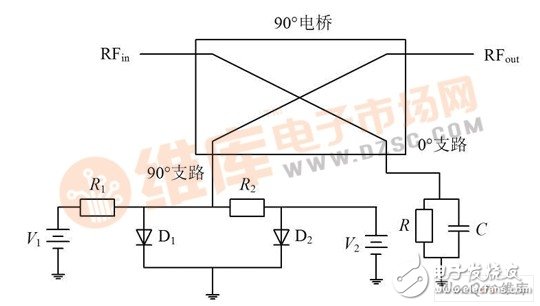
Figure 3 Predistorter model.
2. 1 predistorter model
Using a 90-bridge network to complete the signal processing and matching functions, the capacitor on the 0-channel of the bridge compensates for the reactance component of the diode pair to compensate for phase distortion. A 90-bridge bridge also maintains a good match of input/output impedance characteristics.
2. 2 Nonlinear output analysis
Set the equal-tone two-tone signal vi at the input of the predistorter:
Where: A is the amplitude of the two-tone signal; 1 and 2 are the frequencies of the two-tone signal.
Let the predistorter's nonlinear transmission coefficient be y = f ( x ) and the output be vo , ie vo = f ( vi) . Spread it into a power series form:

It can be seen from the above formula: In the output signal of the predistorter, there are not only the fundamental frequency signal, but also the harmonics and various intermodulation signals. Among them, the third-order intermodulation distortion component is needed, and the fundamental frequency component generated here can be called “interference signal†for the design, and the circuit must be designed to eliminate the fundamental frequency signal.
2. 3 new predistorter design
For the problem that the predistorter output has a fundamental frequency signal that is not needed by the system, a new type of predistorter is designed to eliminate the fundamental frequency signal. The circuit schematic is shown in Fig. 4. The input constant-amplitude two-tone signal is divided into two by the 3 dB splitter, one signal enters the predistorter, and the other signal is delayed by the delay and enters the gain/phase adjuster. The delay is primarily to synchronize the signal entering the gain/phase adjuster with the signal entering the predistorter. The gain/phase adjuster is formed by cascading an adjustable attenuator and an adjustable phase shifter for obtaining a fundamental frequency signal having an appropriate amplitude and phase. In addition, the output of the predistorter will contain a series of nonlinear distortion components, including the fundamental frequency, which, after appropriate delay, are sent to the power combiner along with the output signal of the gain/phase regulator. By controlling the attenuation of the attenuator and the phase of the phase shifter, a signal having the same amplitude and opposite phase as the fundamental frequency signal included in the predistorter output signal is generated to cancel the fundamental frequency component produced by the predistorter. The signal obtained at the output of the power divider is the required third-order intermodulation distortion signal.
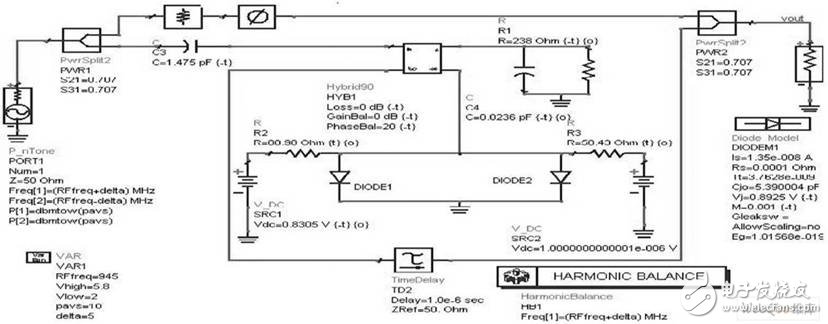
Figure 4. Predistorter circuit with cancellation fundamental frequency.
2. 4 predistorter simulation analysis
The circuit simulation model was built in Agilent's ADS2008U1. The simulation circuit adds equal-amplitude two-tone signals as shown in Figure 4, with frequencies of 940 MHz and 950 MHz, respectively. Harmonic balance (HB) simulation analysis of the circuit, the spectrum of the predistorter output signal is shown in Figure 5, Figure 6.
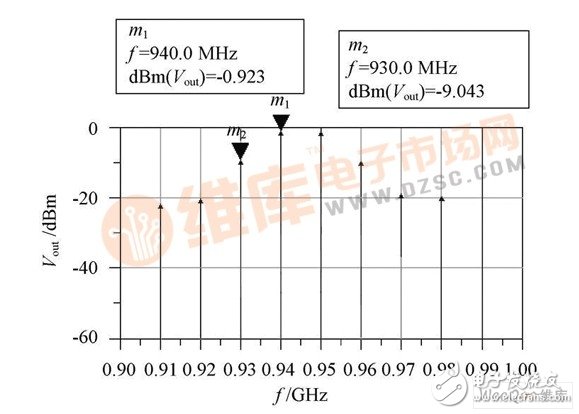
Figure 5 Traditional predistorter output spectrum.
Figure 5 shows the simulation results of the traditional predistorter, and Fig. 6 shows the simulation results after adding the cancellation frequency circuit. By comparison, it can be seen that after adding the cancellation frequency circuit, the fundamental frequency component of the signal at the output of the predistorter is reduced by 40 dBc.
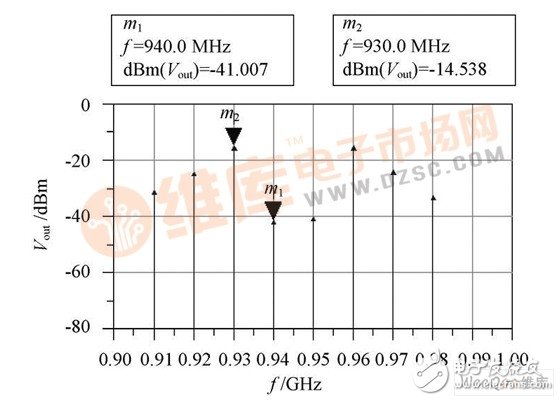
Figure 6. Improved predistorter output spectrum.
3 Design and simulation of predistortion power amplifier3. 1 Design indicators and construction of pre-distortion power amplifier circuits
The performance of the predistorter RF power amplifier is: 900 MHz to 1 GHz; the output power is greater than or equal to 13.4 dBm; the third-order intermodulation improvement is greater than or equal to 40. 2 dBc. The simulation uses a packaged power amplifier module, which contains the power tube MRF9742 and DC bias circuit and input/output matching circuit. The predistortion power amplifier circuit is shown in Figure 7.
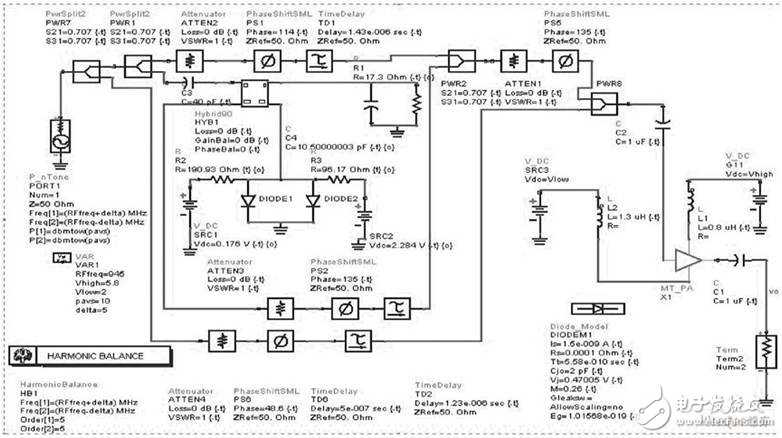
Figure 7 Predistortion RF power amplifier circuit.
3. 2 RF power amplifier simulation results
The simulation results are shown in Figure 8, Figure 9.
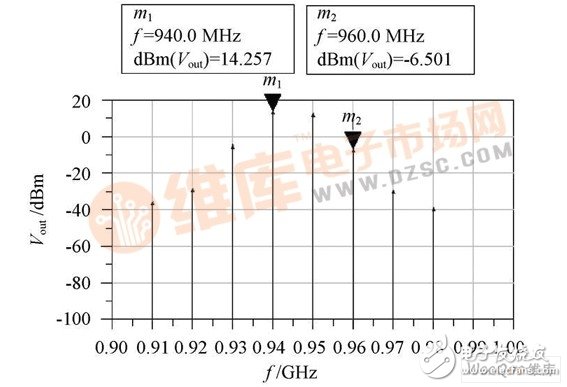
Figure 8 PA output spectrum without predistorter.
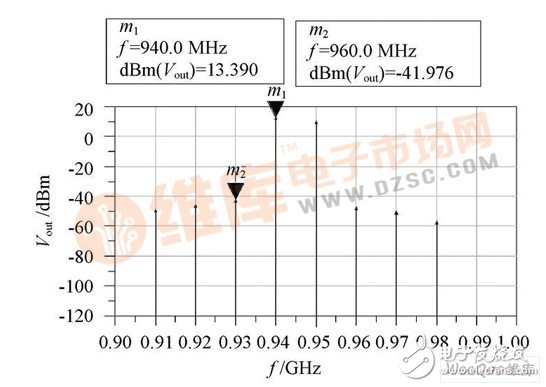
Figure 9 PA output spectrum after adding the predistorter.
Figure 8 shows the output spectrum of the power amplifier without the predistorter. Figure 9 shows the output spectrum of the power amplifier with the predistorter added.
4 ConclusionThis paper designs a predistorter with a cancellation frequency and uses this predistorter to improve the nonlinear distortion of the RF power amplifier. The simulation results show that the predistorter designed by this paper can significantly compensate the shortcomings of the traditional predistorter, and can suppress the third-order intermodulation distortion component of the RF power amplifier by more than 40 dBc. The improvement of this paper is that the adaptive method can be used to control the adjustable phase shifter and attenuator in the circuit, and the attenuator and phase shifter can be adaptively adjusted by detecting the proportion of the third-order intermodulation distortion component in the output signal. This can better improve the nonlinear distortion of the rate amplifier.
Sensor Series
Sensor series include electrode type water inlet detection sensor, Pressure Type Liquid Level Sensor (Marine), pressure type liquid level sensor (Marine side mounted type), Marine High Temperature Pressure Sensor (LED display) Compact Temperature Sensor , explosion-proof temperature sensor, UHC Marine Electrode Water Level Sensor, pressure sensor (shockproof type), marine pressure liquid level sensor (ceramic capacitive type) Radar Level Gauge Sensor , floating ball level sensor, Differential Pressure Sensor , Temperature And Humidity Sensor (dry battery power supply), explosion-proof (high temperature) pressure sensor, Gas Sensor and Marine Pressure Sensor . pipeline oil pollution detection sensor.
Level Sensor For Liquid,Small Temperature Sensor,Low Temperature Sensor,Water Temperature Sensor
Taizhou Jiabo Instrument Technology Co., Ltd. , https://www.taizhoujbcbyq.com